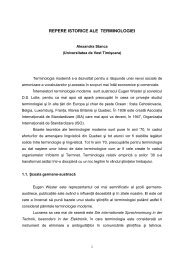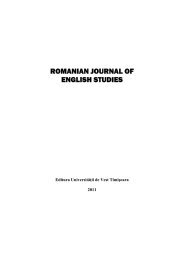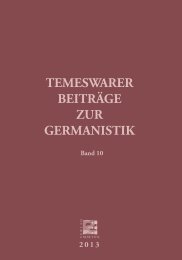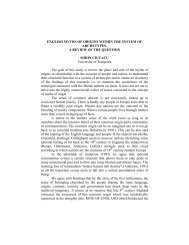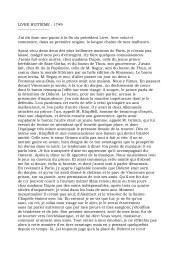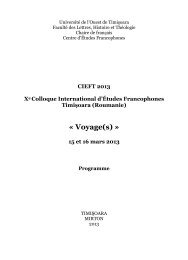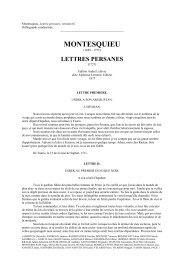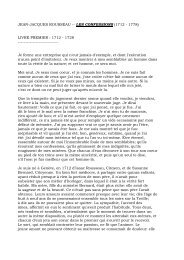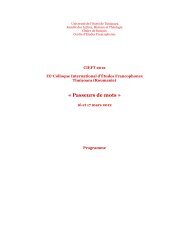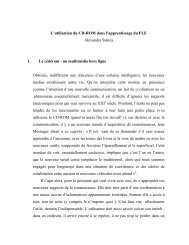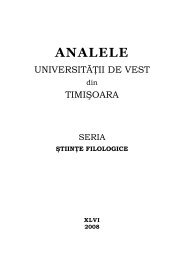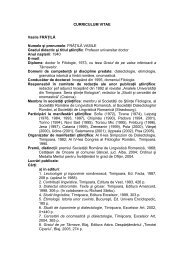TRANSLATION AND MEANING: A CULTURAL- COGNITIVE ...
TRANSLATION AND MEANING: A CULTURAL- COGNITIVE ...
TRANSLATION AND MEANING: A CULTURAL- COGNITIVE ...
Create successful ePaper yourself
Turn your PDF publications into a flip-book with our unique Google optimized e-Paper software.
literary and cultural experience is essential in the process, but a good reader<br />
of literature (the dominant function of the translator at this initial stage)<br />
needs to be able to interpret those ambiguities, understatements,<br />
informational gaps or the entire flow of information by supplementing<br />
knowledge with a certain degree of imagination. The hermeneutic search is<br />
a complex and, according to what Cornis-Pop (2000:11) calls<br />
antimetaphysical approaches to literature, a never-ending activity of<br />
meaning negotiations at various stages of reading and re-reading the text, in<br />
close connection to the kind of ideological and normative frameworks<br />
determining successive returns to a given text. Thus post-structuralist<br />
theorists such as Roland Barthes, Jacques Derrida, Umberto Eco and others,<br />
have expressed in various ways a growing concern for the impossibility of<br />
ever reaching a satisfying, final understanding of the literary text,<br />
particularly when the very act of reading is seen as productivity, as a<br />
dynamic process refined by successive re-readings, reinterpretations,<br />
continuous negotiations in search of some form of interpretational<br />
coherence. In his comprehensive study of views on interpretation as a<br />
critical act and the search for that ultimate meaning, Marcel Cornis-Pop<br />
views critical interpretation as a mode of re-writing, a continuous translation<br />
and readjustment of meaning (2000: 18). Rob Pope (1998: 242) also speaks<br />
of the process of active reading - and hence of understanding a text,<br />
responding to it - as a re-writing of the original. On the other hand, the<br />
philosophy and practice of translation have not been the same since George<br />
Steiner’s seminal study After Babel (1975), where he pushed the limits of<br />
the concept of translation by stating that interpretation is translation, hence<br />
any type of interpretation of meaning is to be understood as a form of<br />
translation. The three perspectives presented are only slightly different: the<br />
first sees interpretation as a critical practice that is characteristic of all<br />
conscientious readers, the second approaches literary texts from the point of<br />
view of the multiple possibilities for textual intervention, whereas the third<br />
approaches translation as a hermeneutic process impossible outside the<br />
larger cultural framework of all meaning exchanges. Considering that the<br />
translator is one of the conscientious readers and critics of the literary text,<br />
as well as the target reader’s authority as regards the meaning(s) of the<br />
source text, and being its rewriter in target language as well, the<br />
aforementioned approaches can be seen to converge, explaining each how<br />
the translation is carried out as an interpretation while also accounting for<br />
the difficulty of the process.<br />
The translator’s interpretation of the literary text appears as one of<br />
the possible outcomes of the hermeneutic process, one of the ways in which<br />
the original is rewritten. The resulting rewriting involves the second role of



